The importance of a knowledge base for customers is undeniable--they prefer it over all other self-service channels of communication, as per research.


The importance of a knowledge base for customers is undeniable--they prefer it over all other self-service channels of communication, as per research. However, knowledge bases can also bring about an umbrella of benefits internally.
First things first, let's understand what we mean by an internal knowledge base. Basically, an internal knowledge base software:
Now that you have a basic understanding of an internal knowledge base, let's move onto the next most important question:
If you are still on-the-fence about the advantages of using a knowledge base for internal purposes, look no further and consider the following statistics:
Clearly, investing in an internal knowledge base is a smart business move, which can offer a host of advantages. So the real question then becomes:
Here are top-5 factors to consider when implementing an internal knowledge base:
A rather obvious but equally important tip, your knowledge base should not be bundled with other tools. Ideally, go for a best knowledge base software that acts as a centralized tool for knowledge sharing--one that offers reliable information and an intuitive user experience from the get-go. Plus, it should come power-packed with dynamic search engine technology, allowing employees to search for articles easily and instantly, as Wix demonstrates below:
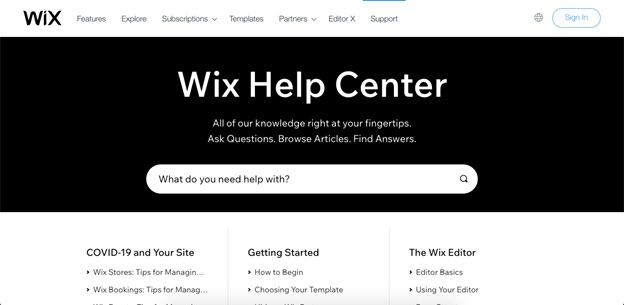
In order to build a seamless and up-to-date knowledge base, go for a provider that offers easy integration with your other business tools. More importantly, your software should offer the flexibility to meet your demands and scale (as needed). Finally, ask yourself the following questions:
Keep in mind that the purpose of creating a knowledge base is to boost team’s productivity. So make it technically easy for your employees in a way which does not affect their sleep and creative thinking.
Any internal knowledge base worth its salt should be organized, structured, educative, and motivational. After all, the idea is to answer all your employee's questions and save their valuable time and energy.
Asana's knowledge base does a great job of answering customer queries by organizing the content into the three most important types of inquiries: the basics, the multiple functionalities, and leadership tips on how to use the product effectively. The result? You end up with a useful, in-depth, well-designed, and comprehensive knowledge base that allows for seamless onboarding and customer acquisition:
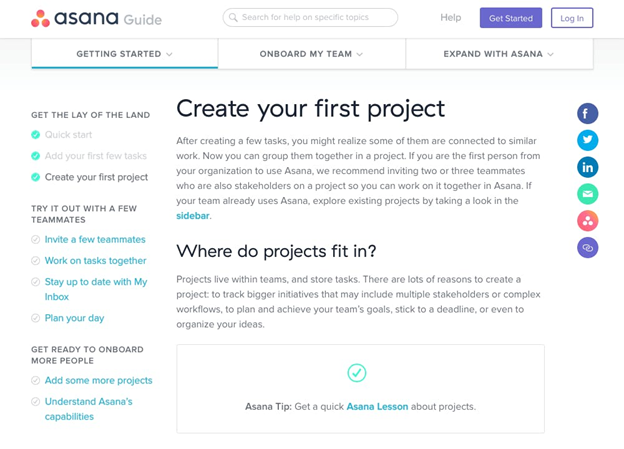
Handy tip: Within your knowledge base, capture data at the organization as well as the team levels as this allows for seamless and convenient knowledge sharing within teams and across the enterprise. At the end of the day, your employee's needs may overlap depending on which team they belong to. Hence, your internal knowledge base should be flexible and expansive--one that stems from a top-down knowledge management strategy, but guides in article creation from the bottom up.
Think about what kind of information your employees might find useful--from HR information and employee handbooks to how-to videos and FAQ-type content; your knowledge base contains information in a variety of learning forms and formats.
At every step of the way, think about the language your employees use and structure content that feels intuitive and employee-friendly as GreatCo does
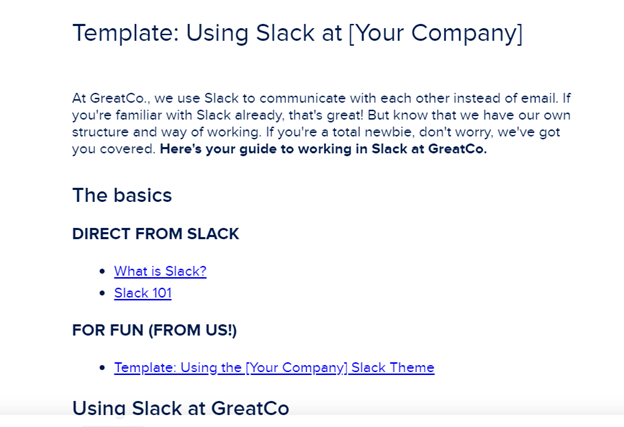
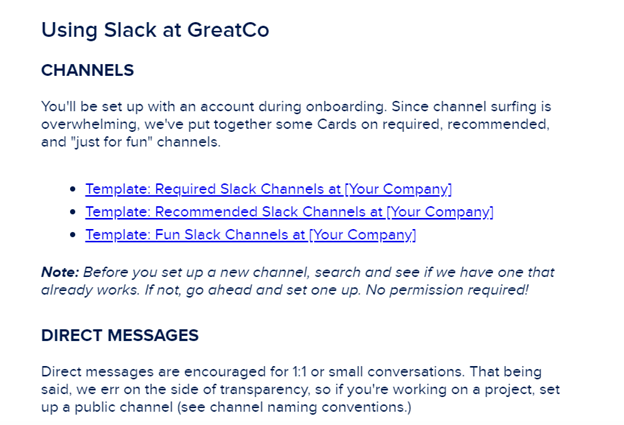
Moreover, your content should be easy to find. This is why creating a hierarchical structure becomes key. Finally, remember that related pieces of information should be connected via a hyperlink or by tagging or using both to add more context.
If you wish for your knowledge base to stay relevant at all times, you'll need to gather feedback and reviews to understand what's sticking (and what's not). Here are a few best practices to follow when gathering employee feedback:
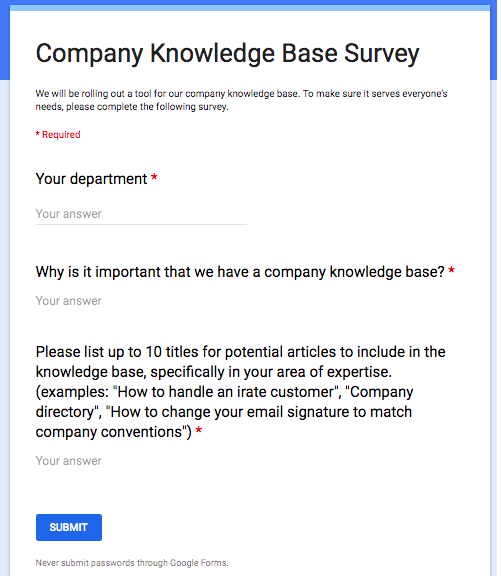
All in all, capturing your employee's voice can help save a lot of time, energy, and effort in creating a rock-solid knowledge base that offers real value for your employees.
The most important thing to remember is this: Your knowledge base should ultimately collate into an educational archive that’s easily accessible. You can collate all your content in an archive and link it using a dynamic link, or you can create a QR code to the archive for omnichannel accessibility. Plus, it should have the ability to make updates in real-time with practical, user-oriented information. If it has outdated information, it might as well be defunct.
To help you get started, here are the different kinds of information that you can build on within your employee-friendly knowledge base:


Bonus points for using a meme!
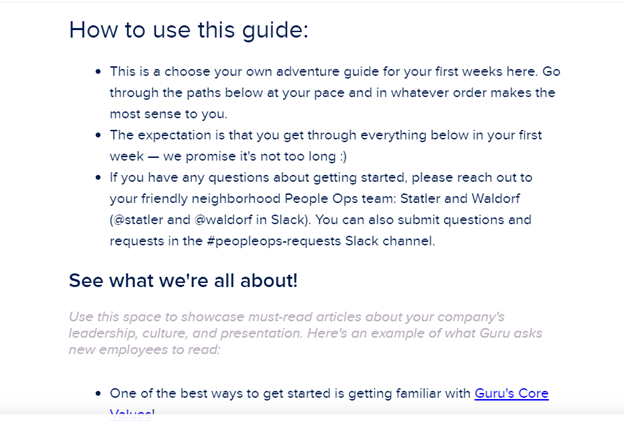

An internal knowledge base is a self-service tool that organizations--be it big or small--need, to keep up the pace, reduce internal friction, and improve collaboration as well as communication across the board. Follow these tips outlined above and supercharge your internal communications for good. Thoughts?
She is passionate about Business, Entrepreneurship, E-commerce, emerging technology and Digital Marketing. She is working with Acquire as a digital marketing expert. She is a free soul and adventurous scholar who spends her free time with herself, loved once, music, as well as watching & playing sports. She is ocean addicted and on roads being a thrill-seeking traveler to get new experiences as she looks at life as our very own works of art.






